| 1 | A nimble Australian tree climber |
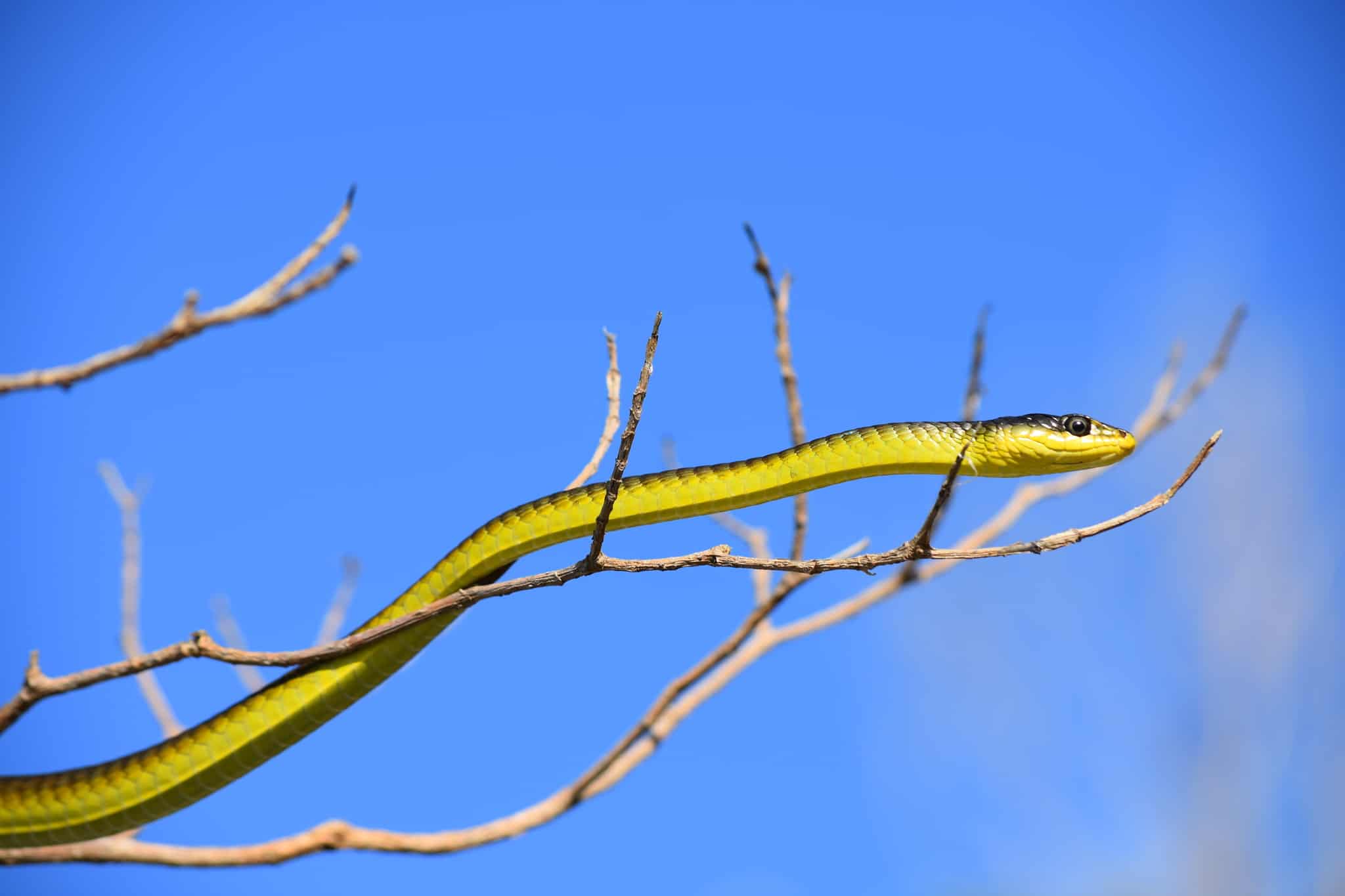
The snake family Dendrelaphis has over 30 members in southeast Asia, but the only one to have made the leap to Australia is Dendrelaphis punctulatus, AKA the green tree snake. This is a harmless snake, which is very common anywhere where trees grow. D. punctulatus is very unfussy about its habitats – trees are all they require. They’ve failed to conquer the barren inner outback of Australia, but occupy the entire east coast, and a chunk of the north.
Green tree snakes can appear in dense rainforests, fields bordered by copses, caravan parks, and trees outside your bedroom window. This is a climbing snake, and they’ll climb just about anything. Trees, windowsills, postboxes, scarecrows, wooden fences – manmade or natural, it doesn’t matter, this snake will climb it. There’s no clear motivation, they’re doing it just because they can.
This isn’t one of Australia’s venomous snakes, but one that watches silently from branches above, before skitting away when footsteps get too near. This climbing has its price, however, as green tree snakes are sometimes carried off in the talons of hungry black kites.
| 2 | Defends itself viciously |
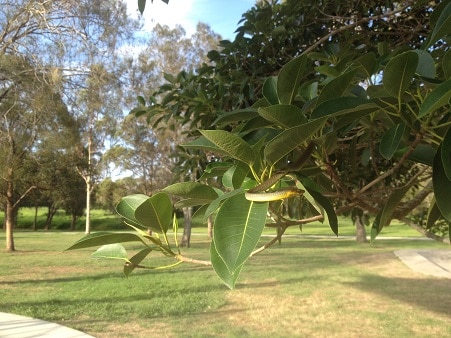
Green tree snakes lack venom, and they even lack front fangs, with rows of short, sharp teeth for gripping amphibians instead. However, they have a piercing hiss, with which they force oblivious passerbys to take notice.
Green tree snakes are unpredictable. Sometimes, they swivel around and vanish into the bushes in a split second, but other times they’ll stand their ground. No-one knows what’s going through their serpent mind. It could be certain movements, or a flash of colour like a yellow jacket that reminds them of a certain wild predator. Either way, green tree snakes are capable of delivering bites that throb for a long time afterwards. One fact about Dendrelaphis punctulatus is that its teeth tend to break off in the victim, except that unlike a bee and its sting, they don’t die afterwards.
When warning its enemies, Dendrelaphis punctulatus will sway its long, black tongue up and down like a flag. They’ll also inflate their neck, which looks like a piece of food is lodged in it. Like many snakes, Dendrelaphis punctulatus produces a foul odour in defence, but this time it’s particularly strong.
| 3 | Fast and acrobatic |
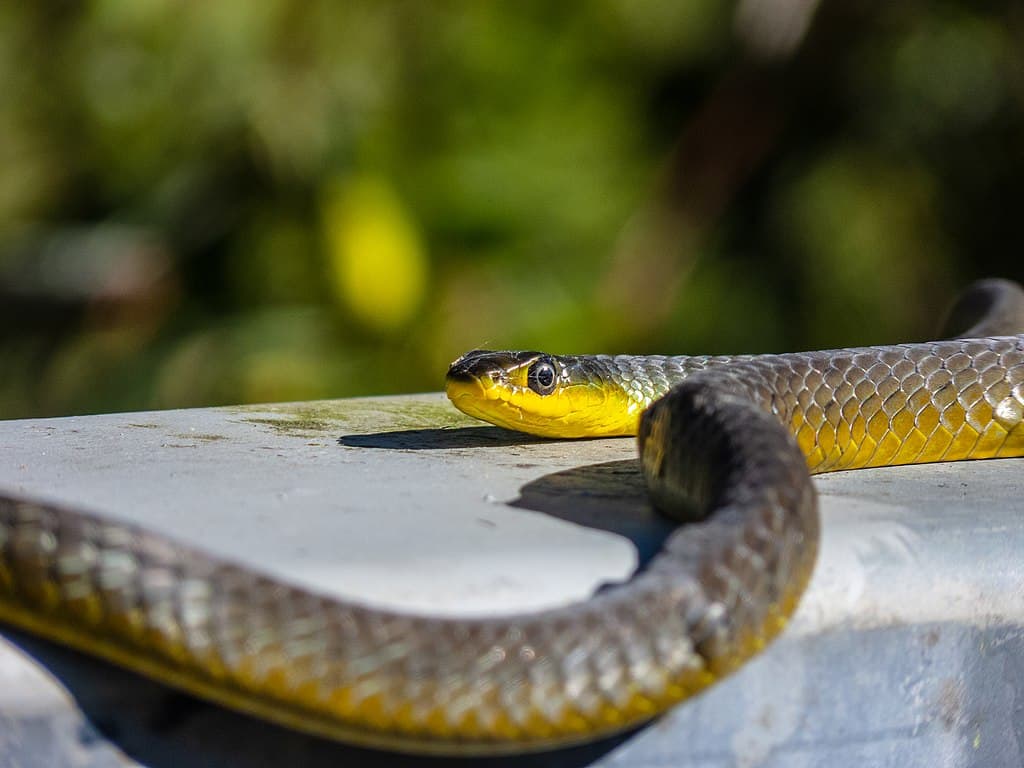
Green tree snakes are one of the longer of Australia’s harmless snakes. Snakes of 1.5 metres are common, with females being larger than males. The friendly common keelback averages at 50-75cm, while Sydney’s broad-headed snake averages at 60cm.
D. punctulatus is an extremely thin, yet fast snake, with large, darting black eyes that are particularly massive as hatchlings. Their hunting strategy is to chase down prey and grab it, ditching all subtlety. Dendrelaphis punctulatus lacks the constricting powers of a python, and even if it tried to, it’s body is so thin it would probably snap. Rather than crushing, this snake is built for nimbleness, speed and agility, which comes in use when zipping up trees to escape dog walkers.
This is also a dancing snake, as this video from the Solar Whisper wildlife park shows. Fred, a well known green tree snake at the park, is on a sandy riverside beach grooving his upper body back and forth for no reason. Green tree snakes can tap into a mysterious serpent rhythm that nobody else can hear.
| 4 | Blue morphs are out there |
Blue snakes are much rarer than you’d think, probably because green provides an infinitely better camouflage in the forest. The closest are normally grey vipers with a slight blue tinge, but the green tree snake is a rare one to have truly blue morphs. This species is renowned for its high amount of morphs. The typical colour is a rich slatey grey, with only very subtle patterns. This contrasts sharply with the belly, which is a fruity yellow, also with few patterns.
However, another swathe have a rich green-coloured back. Another group has a sparkling watery blue, mixed with grey. There’s also a deep orange version, and all three keep the fruity yellow belly. Then there’s the true blue crew. This is not just a weak watery blue, but a full turquoise like staring at a cloudless sky near the equator. Alongside morphs of the Malabar pitviper, it’s one of the bluest snakes on Earth. This picture is a great example.
If you want to hunt for these blue morphs, then the good thing is that their camouflage is way worse than normal.
| 5 | Addicted to tree frogs |
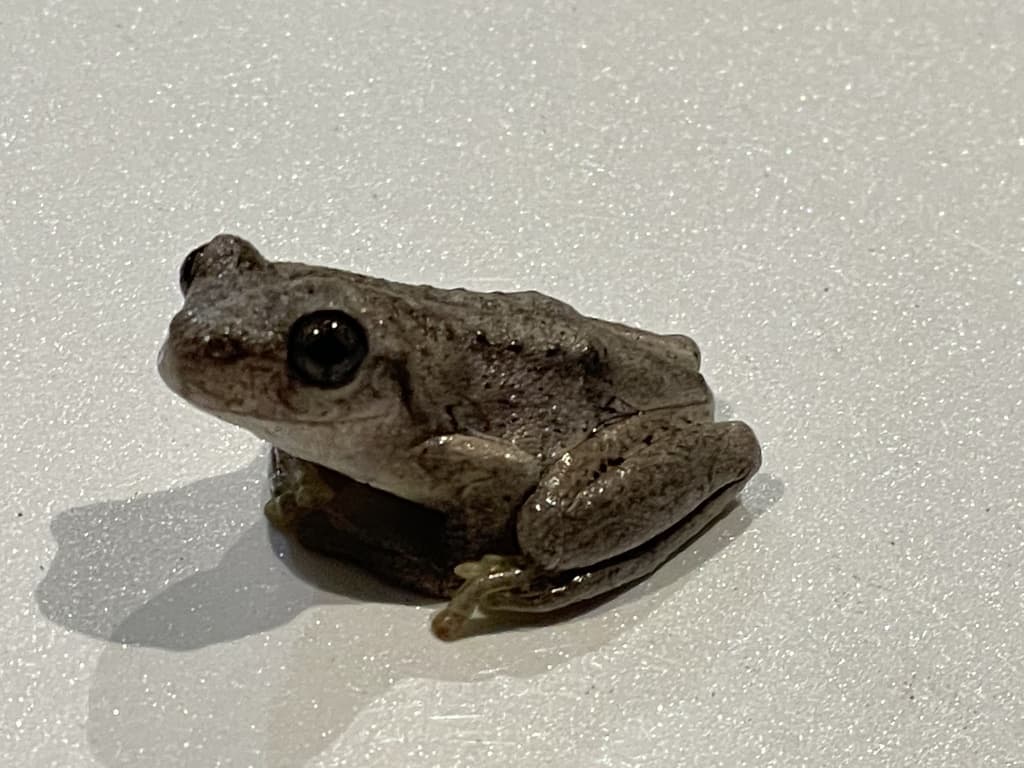
Breeders have tried to feed this snake mice in captivity before, but they shied away in disgust. Instead, the green tree snake is a frog eater, and particularly the tree frog family of litoria. Something about this family with its deep round eyes and spindly legs sets off its hunting instincts deep within. Nobody knows which came first – the love of tree frogs, or their excellent climbing abilities. But either way, dendrelaphis punctulatus is now a finely attuned tree-dwelling machine. Species they’re confirmed to eat include…
Green tree frog (Litoria caerulea) – in a study in north Queensland, this was the single most common prey species found in green tree snakes. Other prey included striped burrowing frogs, ornate burrowing frogs, and even locusts.
Northern dwarf tree frog (Litoria bicolor) – a tiny, 3cm frog that hops around grasslands and marshlands, always with a stream or water nearby. Only lives in northern Australia.
Peron’s Tree Frogs (Litoria peronii) – this orange, 5cm frog is also called the maniacal cackle frog, and maybe you can guess why. However, it isn’t so evil and diabolical that green tree snakes can’t swallow them whole, as spotted in New South Wales.
| 6 | Forced to evolve |
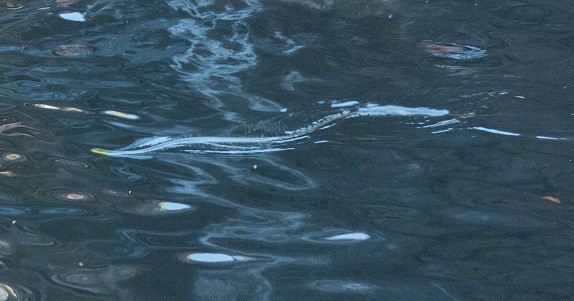
The cane toad is one of Australia’s most notorious invasive species. Their bodies are loaded with white frothy bufotoxins, stored in a gland in their shoulder, which are fatal from the moment they begin life as tadpoles. The common keelback has natural resistance, but the green tree snake has no such luck. Scientists have feared that this invasive toad could deal the species a severe blow.
However, like the red-bellied black snake, a study found that green tree snakes have adapted to cane toads extremely quickly. Since they arrived in 1935, the snake has seen a 3-5% increase in body length. This increase would cause the toxins to disperse over a greater area, thinning out so that the snake’s survival chances increase. But at the same time, their heads shrank, and their “gape” width decreased, when a snake opens its mouth massively wide to swallow prey. This reduced the size of the cane toads they could physically swallow.
As expected, snakes with resistance to cane toads like the common keelback or marsh snakes showed no changes. There was no extreme pressure cooker motivation to evolve rapidly. Meanwhile, the other severely toxin amphibian in Australia is Dahl’s water frog (litoria dahlii), and again, Dendrelaphis punctulatus isn’t blessed with inbuilt defences.
| 7 | Occasionally invades New Zealand |
It was October 2018, and Jimmy Calder was out for a relaxing Sunday drive with his son Warren. The duo had just reached Te Anau, and New Zealand’s wildlife seemed all in check – sheep, birds, cows. All that changed when Warren saw the dashboard open and a small snake head pop out.
The slender serpent dived between Jimmy’s legs, landing squarely at his feet. He correctly identified it as a green tree snake, and resisted the urge to panic. At 2pm, the duo drove the snake to Te Anau police station, where it was euthanised by fumigation. But how did it enter New Zealand in the first place? Calder had recently been on holiday in Australia, and had shipped his car over to drive around the country in comfort. He had just had the car shipped back.
Experts played down an invasion, saying that the cold winter would have finished off the tree snake anyway. New Zealand has a total ban on snakes. The country has no native serpents, except yellow-bellied sea snakes that occasionally wash ashore, and to keep it that way, pet snakes are banned, as are zoo snakes.
| 8 | Infested with parasites |
Something strange people notice about green trees snakes is lumps beneath their skin, sometime multiple, and usually the size of round pebbles. These lumps are parasites, tapeworms of the species Spirometra erinacei. These worms are common in the frogs they eat, and so the snakes eat them accidentally, and become a comfortable home for the life-leaching worms themselves. The tapeworms then lay their eggs/larvae beneath the skin. These are sometimes passed on to household cats, who hunt the snakes and drag them back inside.
Rather than magnifying glass proportions, the lumps are clearly visible to a person walking past. It’s like the scene from The Mummy in 1999, where a scarab beetle breaks loose and burrows into a character’s arm, and is seen as a lump beneath his skin as it burrows steadily northwards to his brain. The difference though, is that green tree snakes suffer no obvious harm from these parasite tapeworms. They slither around and go about their day just as normal.
| 9 | Faithful to the same trees |
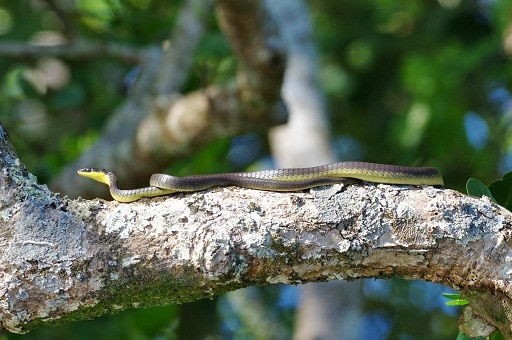
Across Australia, there are secret bases for this snake, which lie deserted and abandoned for many months at a time, before being refilled. In June 2002, Brendan Schembri was walking alongside the Upper Nepean River in New South Wales. At the top of a high sandstone cliff, he looked down and noticed a 25 metre high forest red gum tree, lined with hollows. His position was level with several of the upper branches, and on those branches, Schembri saw several Dendrelaphis punctulatus staring back at him. All perfectly routine, but the next year, he returned to find the green tree snakes on the exact same branch. The next two years, they were there again. The snakes returned always in March on cue, and the branches were covered with shed skins.
Schembri had done it – he had discovered the sacred tree. Why this particular tree was so perfect remains unexplained, but it’s inevitable that there’s more secret bases spread across the parks and forests of Australia. Like a sentry tower or outpost, the snakes man their branches side by side, giving an excellent vantage point to peer down on people’s heads. Snakes might not be Nobel prize winners, but Dendrelaphis punctulatus can find their way back every year like clockwork, using familiar rocks as guiding posts and flecking their black tongues to pick up old scents.
| 10 | Active mainly by day |
The green tree snake has a peak season for sightings in Australia: August to October, the Australian spring. This coincides with when females are breeding, so not surprisingly, the male snakes are on the move.
This is almost completely a diurnal (day-faring) snake, as the latest you’ll possibly see them is 21:00. The peak times are 9:00-11:00, and then 14:30-15:00. Being smart, they avoid the hottest, most oppressive part of the Australian day. In a snake survey in Queensland, 126 Dendrelaphis punctulatus sightings were during the day, with only 5 at night.
Unlike some snakes, male green tree snakes never wrestle each other to assert domination for mating rights. They sometimes pile into a female all at once, with 4 males on one female being recorded. Another two were spotted on top of a female in an air conditioning vent of a Townsville house. The males do this with no aggression towards each other whatsoever.
